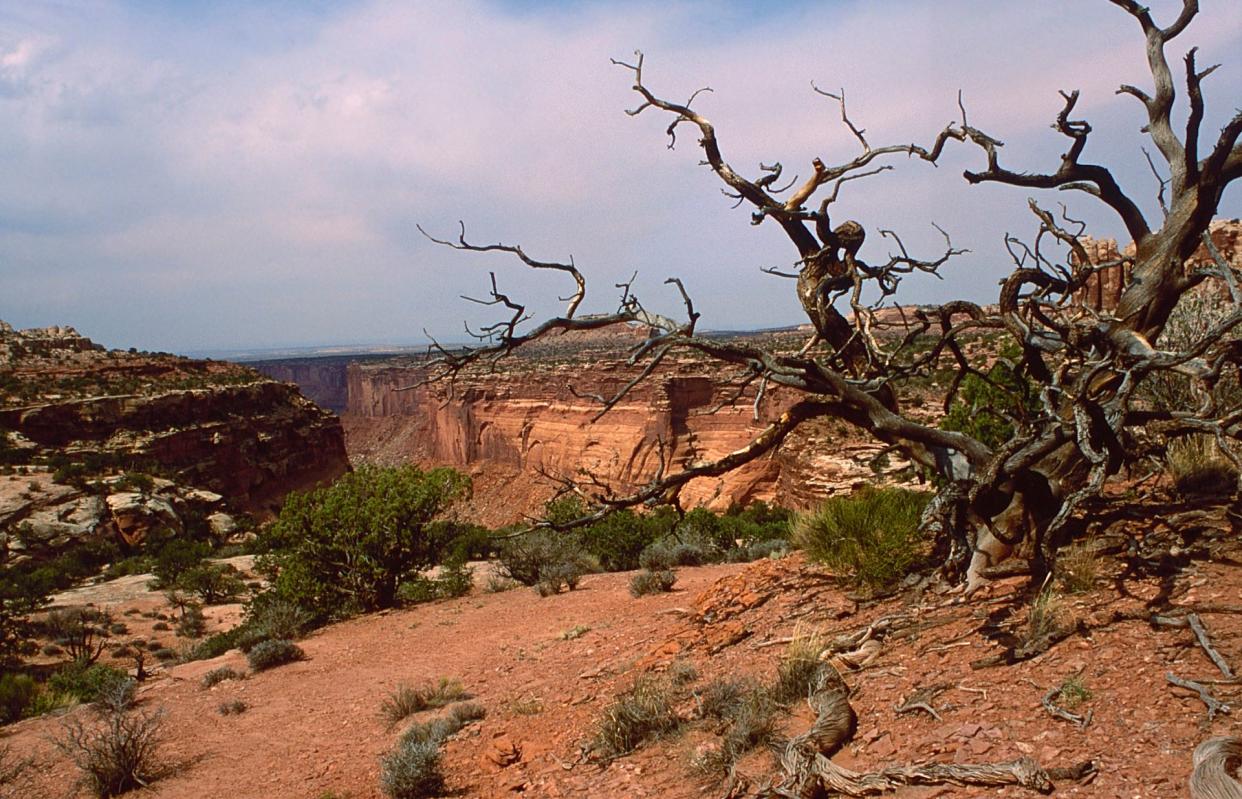Video shows ‘entitled’ tourist ignoring warning sign in national park: ‘The lack of respect is exhausting’

The rules do, in fact, apply to everyone.
One of the latest tourist videos came from Canyonlands National Park in Utah. The incident was documented on Sept. 5 by Tourons of National Parks (@touronsofnationalparks) on Instagram, showing a woman seemingly posing for photos atop a protected arch.
At the end of the short video, the scene pans to a sign in the foreground that reads “KEEP OFF ARCH.”
“I am so over these entitled influencers …” one commenter said. “They are honestly the boils on the butt of humanity. There should be heavy fines for these tourons [a portmanteau of tourist and morons] and we should call them out and educate them any chance we get.”
Another wrote, “The lack of respect is exhausting.”
As with other national parks, it’s easy to stay safe and remain respectful at Canyonlands. Follow the rules, and be prepared for the sun, heat, and rocky terrain.
The National Park Service stated that Indigenous people have moved in and out of the area for more than 10,000 years. Canyonlands and Arches National Park feature sacred areas and the ancestral homelands of 30-plus traditionally associated American Indian tribes.
On the park regulations page, there’s a dedicated rule about walking on arches.
“To promote visitor safety and provide the opportunity to view natural features undisturbed, climbing, scrambling, walking on or rappelling off any named and unnamed arch with an opening greater than three feet is prohibited in the park,” the website says.
Kate Cannon, the then superintendent of the NPS’s Southeast Utah Group, wrote in 2014 that the presence of people on an arch both negatively impacts the experience of other visitors and creates an unnatural condition for the arch itself.
“Arches develop, change, and eventually collapse as a result of natural geologic processes involving the progressive weathering and disintegration of rock,” she wrote. “The particular details of these processes, as well as their sensitivity to acceleration by human activities, are dependent on many site-specific factors.”
Cannon added that people cause vibrations that can permanently damage the arches and accelerate natural stresses. As a result, the features might become unstable, which is dangerous for park visitors.
Though arches can appear stable on the outside, they may succumb to geological forces at any moment. The famous Wall Arch collapsed in 2008, and a portion of Landscape Arch fell away while a visitor recorded it in 1991.
At least one commenter pointed out Canyonlands is home to biological soil crust, which resists erosion and supports plant life.
“Vehicle tracks, bicycles, and footprints are extremely harmful — even a single footprint can kill the soil crust immediately below,” Cannon wrote. “Continuous pressure can break up the crust. Then, rain or wind can scatter the pieces.”
She added that “impacted areas may never fully recover.” Even under the best circumstances, a thin veneer of impacted soil might return in five to seven years. Mature crusts can take 50 years to strengthen, and lichens and mosses can take hundreds of years to recover.
“Help us protect this fragile, but crucial, life by remaining on designated roads, routes, and trails at all times.” Cannon wrote. “Where hiking trails are not established, hike in sandy washes or on bare rock.”
Another commenter noted that they witnessed a similar incident recently.
“I was just there about a month ago and there were about 6 people climbing on top all at once. It was hilarious when the park ranger showed up and let them have it,” they said.
Someone else wrote, “For Instagram, right? Let’s break everything for the sake of likes. Because we are too cool and rules don’t apply to us. I am sorry for the irony but this level of carelessness makes me mad.”
Join our free newsletter for cool news and cool tips that make it easy to help yourself while helping the planet.
